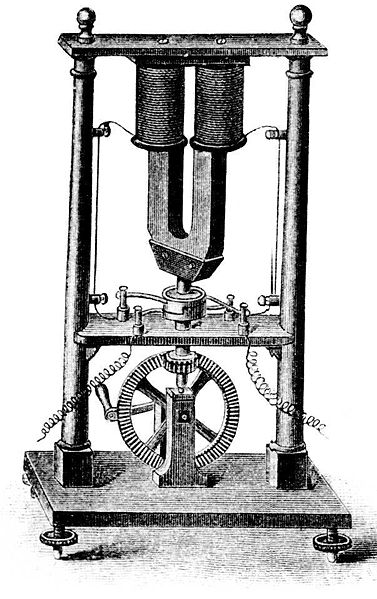An alternator is a type of electric generator used in modern automobiles to charge the battery and to power the electrical system when its engine is running.
Alternator (silver) mounted on a V8 engine
Cut-away of an alternator, showing the claw-pole construction; two of the wedge-shaped field poles, alternating N and S, are visible in the centre and the stationary armature winding is visible at the top and bottom of the opening. The belt and pulley at the right-hand end drives the alternator.
Compact alternator
In electricity generation, a generator is a device that converts motion-based power or fuel-based power into electric power for use in an external circuit. Sources of mechanical energy include steam turbines, gas turbines, water turbines, internal combustion engines, wind turbines and even hand cranks. The first electromagnetic generator, the Faraday disk, was invented in 1831 by British scientist Michael Faraday. Generators provide nearly all the power for electrical grids.
U.S. NRC image of a modern steam turbine generator (STG).
Early Ganz Generator in Zwevegem, West Flanders, Belgium
The Faraday disk was the first electric generator. The horseshoe-shaped magnet (A) created a magnetic field through the disk (D). When the disk was turned, this induced an electric current radially outward from the center toward the rim. The current flowed out through the sliding spring contact m, through the external circuit, and back into the center of the disk through the axle.
Hippolyte Pixii's dynamo. The commutator is located on the shaft below the spinning magnet.







